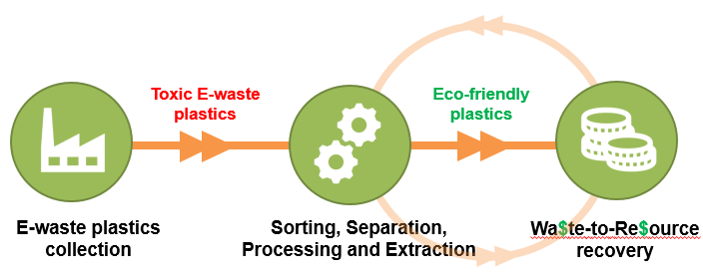Detoxification and recycling of toxic plastics in e-waste

Large amounts of waste electrical and electronic equipment (WEEE) are generated in the world which is causing threats to the environment and human health. Many of the WEEE materials are highly toxic. However, WEEE also contains valuable materials which deserve to be recycled and reused. WEEE plastics can contain various toxic and harmful substances, for example, flame retardants, which can be in the formation of poly-brominated dibenzo-p-dioxins and benzofurans, possibly causing the pollution of water and threatening human health. Thus, the treatment leading to the recycling of harmful WEEE plastics is essential for WEEE management globally and in Singapore’s context. Indeed, Singapore is a land-scarce country where many WEEEs are used and many WEEEs’ plastic wastes are produced. Singapore produces 60,000 tonnes of e-waste annually, of which only 6% is recycled. Hence, it is important to develop efficient technologies for the detoxification and recycling of WEEE-waste plastic to protect Singapore public from the potentially unsafe WEEEs’ plastics.
Therefore, the aim of the project is to develop a new safe, efficient and flexible process steps solutions for the detoxification and recycling of WEEE plastics to promote a closed resource loop. We focus on developing novel solutions by combining mechanical / physical and chemical treatment processes. The research and development efforts are on:
- Investigation of segregation of e-waste plastics;
- Removal of toxic components by various chemical processes;
- Investigation of reuse of recycled plastic and both liquid and solid products after the chemical treatment.

